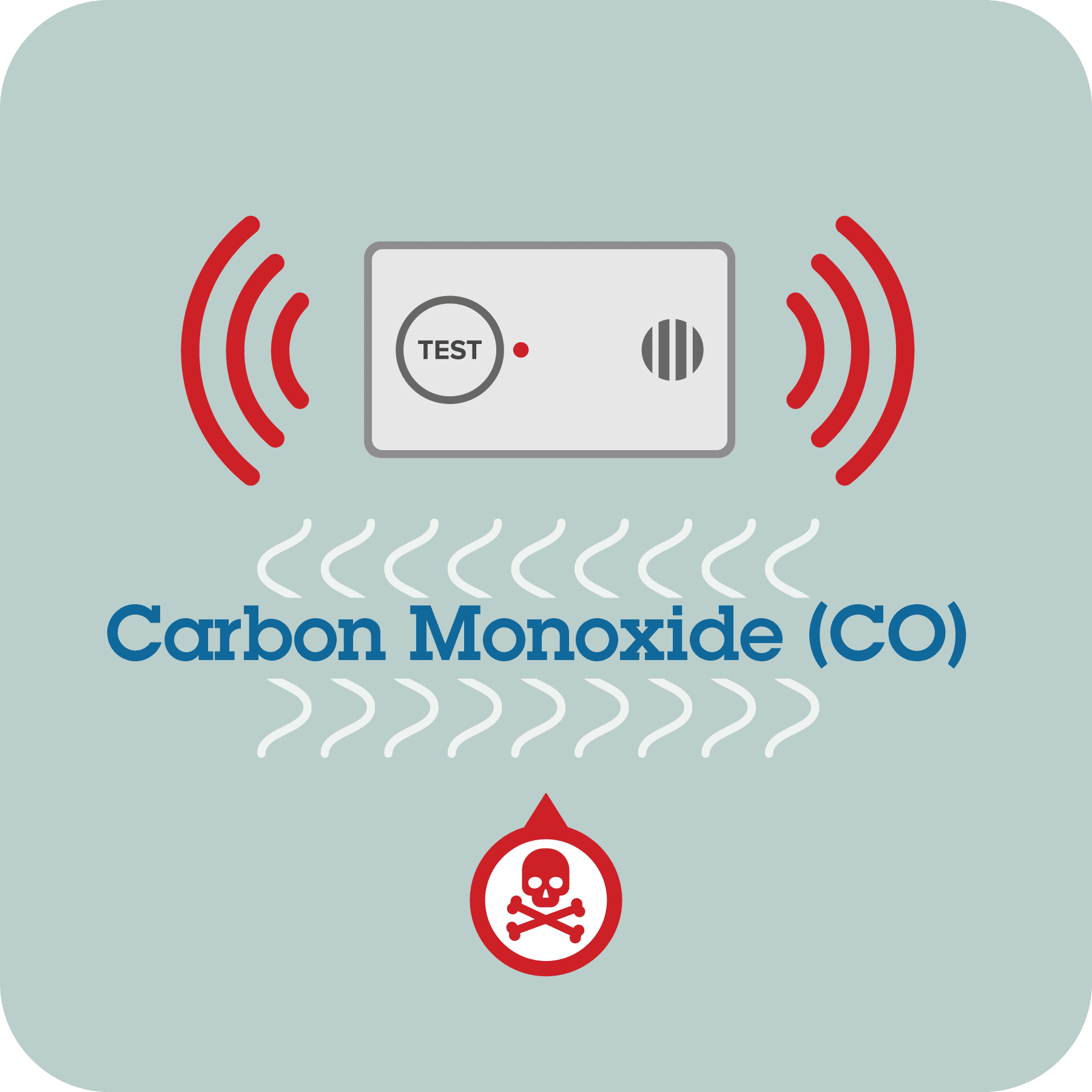Most homeowners recognize the importance of protecting their homes from fire. They do this by checking the batteries in their smoke alarms, completely extinguishing fires in their fireplaces, and keeping flammable materials away from candles or space heaters. However, while fire safety is front and center, many homeowners overlook how they can protect their families from carbon monoxide (CO) poisoning. And that’s a mistake no homeowner can afford to make.
Carbon monoxide (CO) is an odorless, colorless gas formed by the incomplete combustion of fuels. When people are exposed to CO gas, the CO molecules will displace the oxygen in their bodies, which can lead to poisoning.
The problem with CO
Since CO has no odor, color or taste, it cannot be detected by our senses. This means that dangerous concentrations of the gas can build up indoors, and humans have no way to detect the problem until they become ill. Furthermore, when people become sick, the symptoms are similar to those of the flu, which can cause victims to ignore the early signs of CO poisoning.
The CDC estimates that approximately 400 people die from unintentional CO exposure in the United States every year. Data specific to Minnesota show that an average of 14 people die due to unintentional CO poisoning each year. Approximately 300 people visit the emergency department annually to treat symptoms linked to unintentional CO exposure. For more information, Carbon Monoxide Data Portal.
The good news is that carbon monoxide poisoning can be prevented with simple actions such as installing a CO alarm and maintaining fuel-burning appliances.

Thankfully, protection can be as simple as applying these five tips.
- Add or upgrade your carbon monoxide alarm. Your CO alarms are just as critical as your home’s smoke alarms, so make sure you have one that works correctly. Kidde Worry-Free carbon monoxide alarms have the most extended life in a CO alarm – 10 years – and come in battery and hardwired power options. Each notice contains a sealed-in lithium battery that lasts a decade, providing homeowners with peace of mind knowing their alarms are always on. The Worry-Free Combination alarm warns of fire and CO and includes a voice alert to identify the present hazard. It also features a unique intelligent sensing technology to reduce nuisance alarms significantly.
- Seek professional help. One of the most common causes of CO poisoning is a filthy or inefficient heating system. Poorly maintained chimneys and flues can crack, causing ventilation problems and preventing CO from escaping the chimney. Likewise, a faulty furnace could also emit CO into the home. To eliminate this risk, your chimney or heating system is cleaned and serviced by trained technicians annually.
- Keep the grill and generator outdoors. Using a grill or generator due to a power outage? Put on a jacket and go outside. Never bring the grill indoors or operate it or a generator in a space attached to your home, such as a porch, patio, or garage. Both can emit high levels of CO and need plenty of ventilation. Even having the garage door open does not offer enough airflow to reduce CO levels.
- Use your indoor appliances only for their intended purpose. For instance, never use gas appliances, like your range or oven, to heat the house. This increases your risk of CO poisoning.
- Know the symptoms. CO symptoms mimic the flu without fever. Since winter is also peak flu season, know the difference. If you or a loved one is feeling confused or dizzy, or if they are suffering from headaches, nausea, sleepiness, vomiting, or weakness but has no fever, it may be a case of CO poisoning. Get the victim outside in fresh air and dial 911 immediately.
Carbon monoxide poisons thousands yearly, but you can protect yourself and your family using the tips above. To learn more about how Kidde alarms can raise your family’s awareness of CO threats, visit www.KnowAboutCO.com.
Sources:
“Carbon Monoxide Alarm – Carbon Monoxide Detector | Kidde.” Kidde, 2024, www.kidde.com/home-safety/en/us/products/fire-safety/co-alarms/. Accessed 17 Dec. 2024.
“Carbon Monoxide (CO) Poisoning in Your Home – EH: Minnesota Department of Health.” www.health.state.mn.us, www.health.state.mn.us/communities/environment/air/toxins/index.html#:~:text=Carbon%20monoxide%20(CO)%20is%20an.
“Carbon Monoxide Laws.” Kidde, knowaboutco.com. Accessed 17 Dec. 2024
Reviewed by Tomah Health's Infection prevention Team on 12/17/2024
